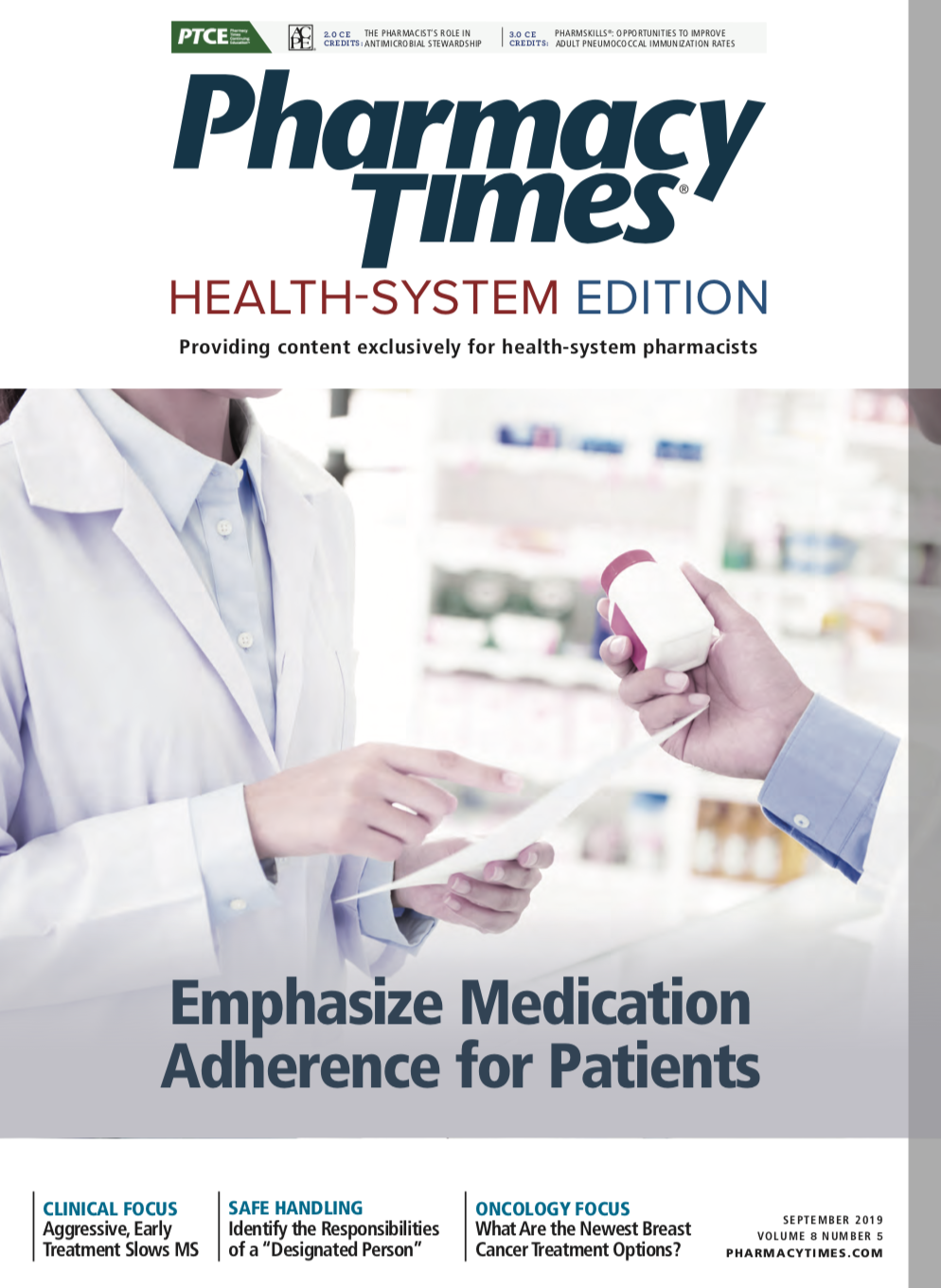Publication
Article
Pharmacy Practice in Focus: Health Systems
Intravenous Lidocaine Can Treat Acute Pain
Analgesic Alternatives May Help Reduce Unnecessary Exposure to Opioid Medications
Acute pain accounts for more than 45% of chief complaints from patients presenting to the emergency department.1 With the opioid epidemic, analgesic alternatives are beneficial in reducing unnecessary opioid exposure in pain treatment. Clinicians may consider parenteral lidocaine when opioids are not suitable, pain is refractory to treatment, or associated adverse effects (AEs) limit their use. Lidocaine exhibits analgesia by blocking peripheral and central voltage-dependent sodium channels and relieves deafferentation and central pain.1
SUPPORTING LITERATURE
In the emergency setting, parenteral lidocaine has demonstrated efficacy in treating pain from renal colic and limb ischemia.2-8 A case series documented successful response in 7 of 8 patients with renal colic refractory to opioids and nonsteroidal anti-inflammatory drugs at 30 minutes after receiving lidocaine as a slow intravenous (IV) push, with no return of pain during hospitalization.6 A randomized controlled trial comparing IV lidocaine to IV morphine 0.1 mg/ kg in 240 patients with renal colic found significantly lower pain scores, favoring the lidocaine group, across all measured time intervals.7 IV lidocaine compared with IV fentanyl 1.5 μg/kg in 90 patients with renal colic showed no significant difference in pain scores at 30 minutes.8 IV lidocaine was dosed at 1.5 mg/kg in all the aforementioned trials.
Clinical application of IV lidocaine has been documented for oncologic or perioperative pain, refractory headache, and trauma.4,9-14 In patients who underwent cholecystectomy or radical retropubic prostatectomy, IV lidocaine 100 mg or 1.5 mg/kg IV bolus, followed by infusion at 3 mg/min, relieved perioperative pain.9,10 Six hospice patients with intractable oncologic pain refractory to opioids achieved effective and safe pain relief with IV lidocaine infused at 10 to 80 mg/h.11 Patients with refractory headaches who were initiated on lidocaine 1 to 2 mg/min infused over an average of 8.5 days reported an average decrease of 4 points on an 11-point pain scale.12 Case reports of IV lidocaine 1 mg/kg infused over 20 minutes and 1.3 mg/kg infused over 10 minutes documented analgesia within 5 minutes in 2 separate patients presenting with severe shoulder separation and acute traumatic ankle injury, respectively.13,14
CLINICAL CONSIDERATIONS
Studied lidocaine doses of 1 to 1.5 mg/kg for acute pain can be infused slowly over 10 minutes or longer on a pump to minimize potential AEs. If AEs occur, they are usually transient and rapidly reversible because of the short 1.5- to 2.0-hour half-life of lidocaine. Common AEs include dizziness, dysarthria, metallic taste, and numbness, which are associated with accumulation following multiple doses. Monitoring of plasma concentration is not recommended, as analgesic doses are less than half the toxic doses of 4 mg/kg. The analgesic properties of lidocaine may continue even after decreases in plasma level. Clinicians should consider judicious use in elderly individuals and patients with severe cardiac history. Cardiac monitoring with IV lidocaine is inconsistently documented in studies.4-12 Practitioners should restrict doses that exceed analgesic doses to critical care areas.
Preliminary evidence supports the effective and safe use of IV lidocaine as an additional nonopioid option for treating acute pain, particularly in the treatment of migraines, perioperative pain, and renal colic.






